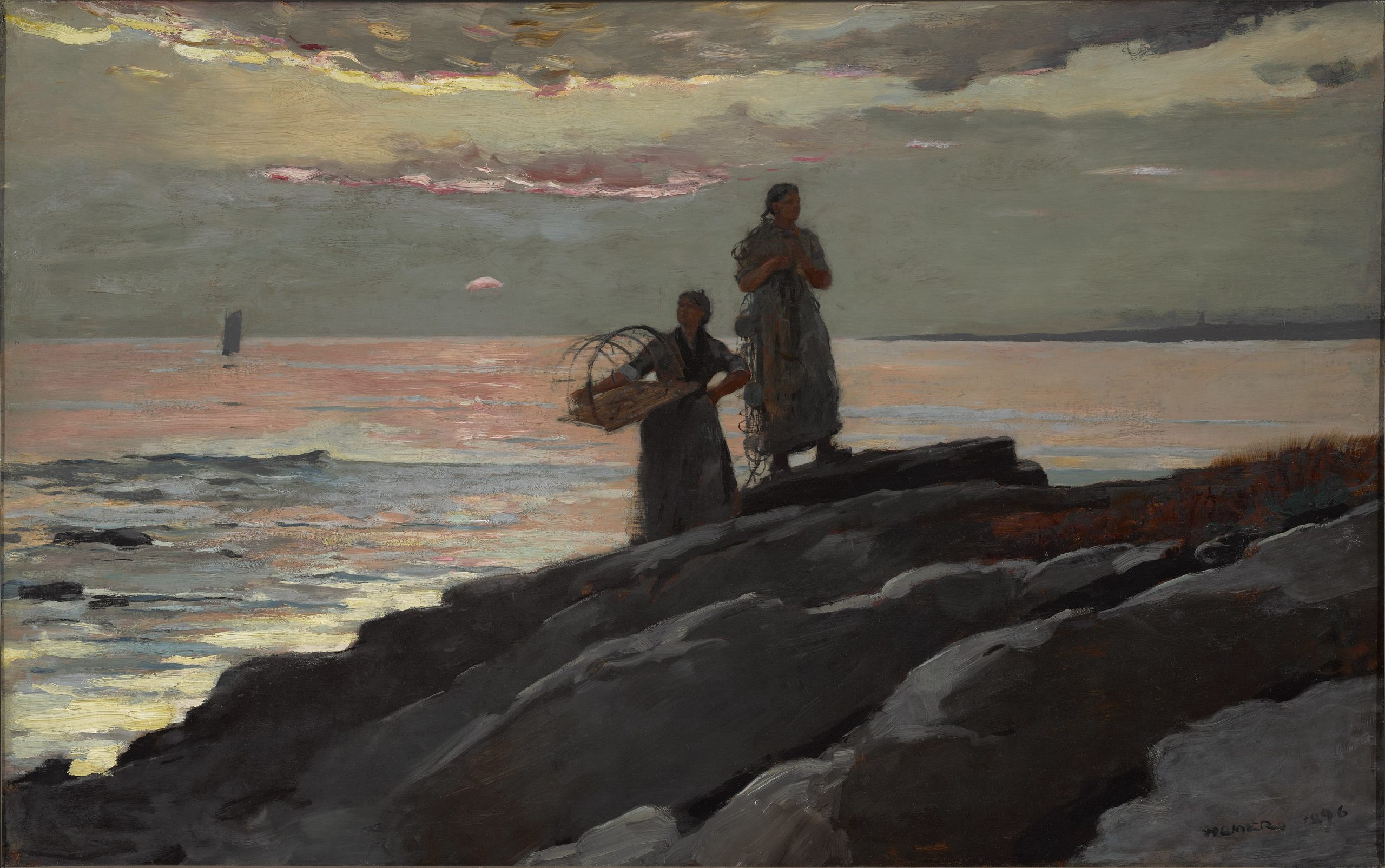37 Connections to the Sea: Work, Exploration, and Escape
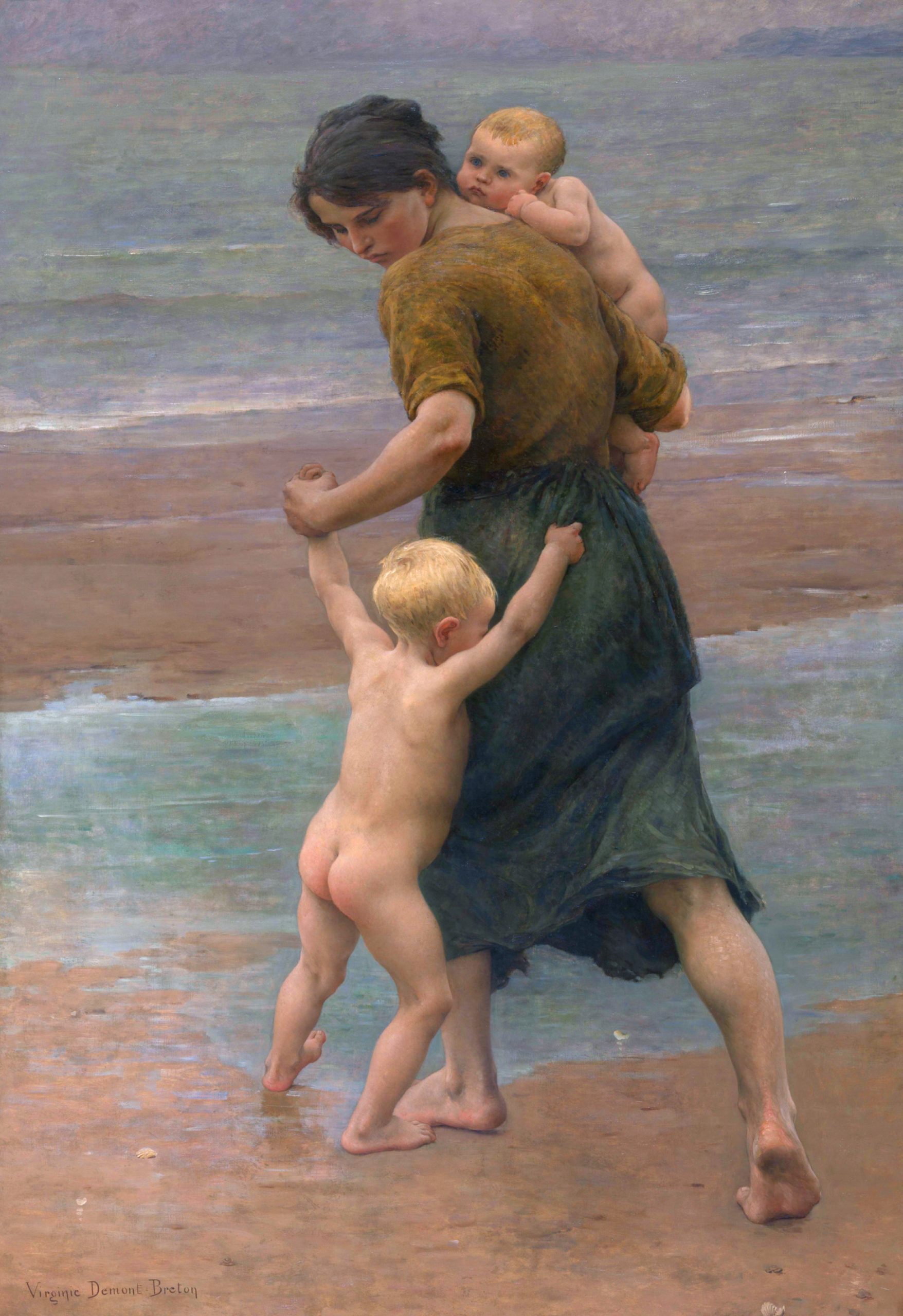
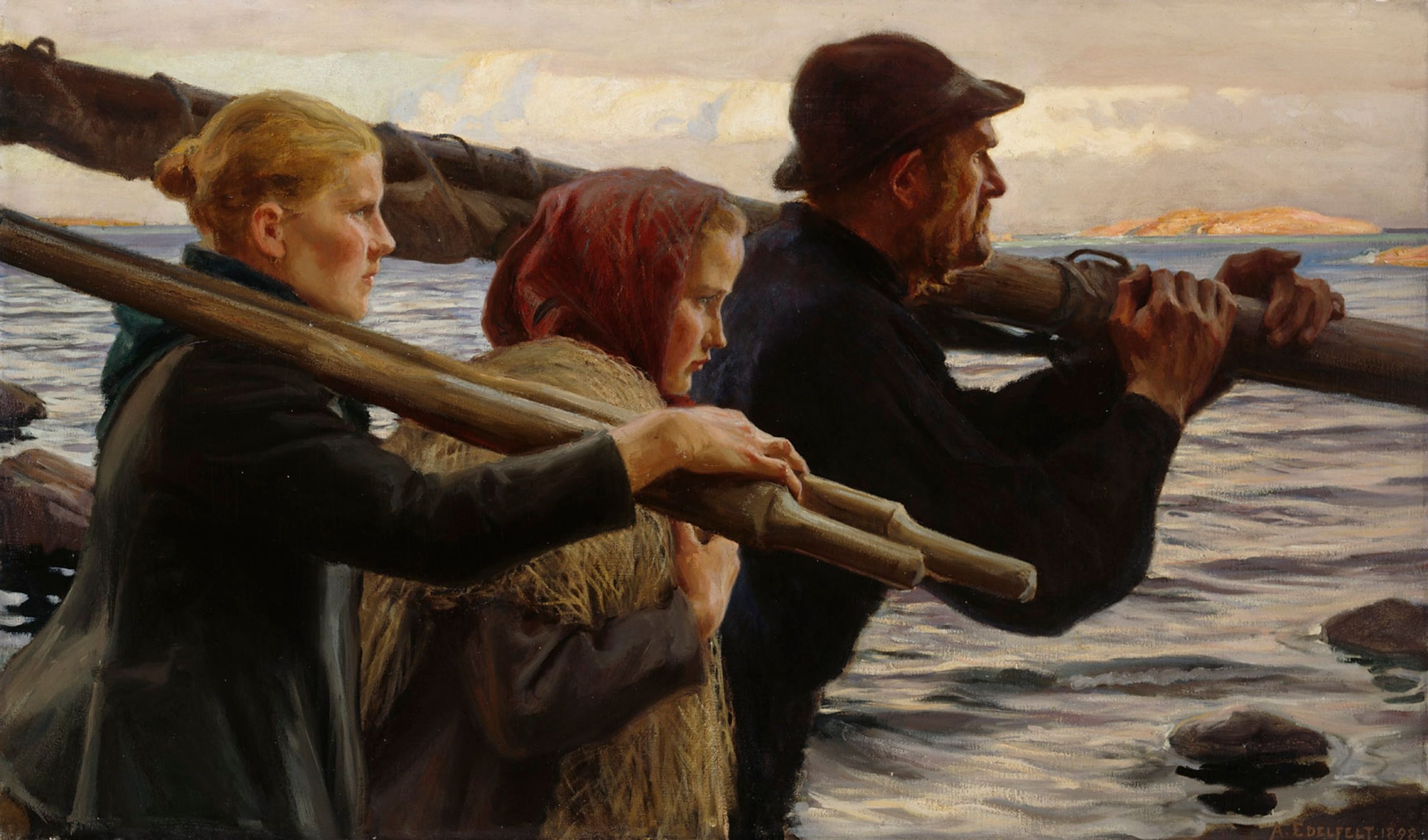
The Fisherman
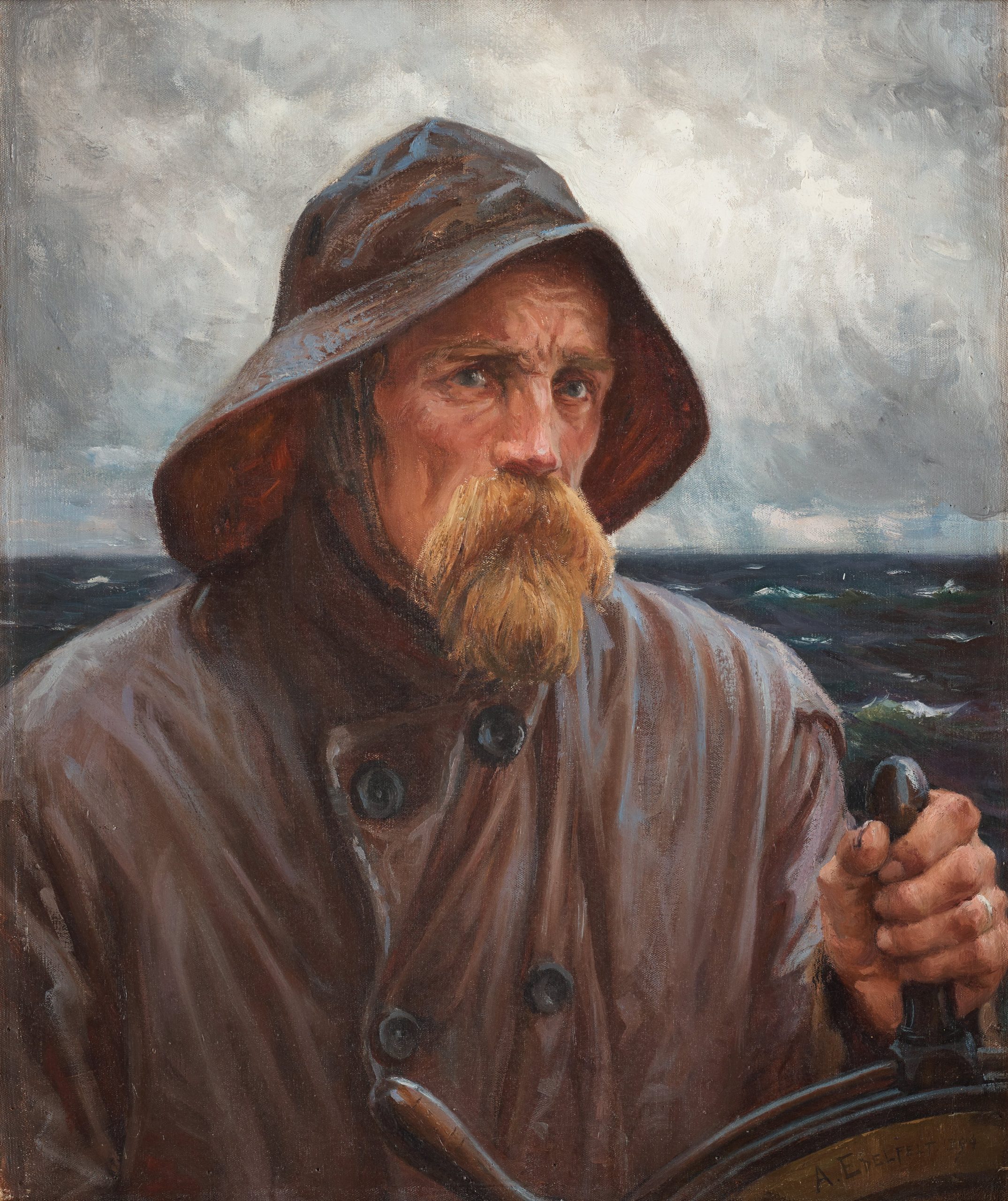
“The Fisherman” by William Butler Yeats
Although I can see him still,
The freckled man who goes
To a grey place on a hill
In grey Connemara clothes
At dawn to cast his flies,
It’s long since I began
To call up to the eyes
This wise and simple man.
All day I’d looked in the face
What I had hoped ‘twould be
To write for my own race
And the reality;
The living men that I hate,
The dead man that I loved,
The craven man in his seat,
The insolent unreproved,
And no knave brought to book
Who has won a drunken cheer,
The witty man and his joke
Aimed at the commonest ear,
The clever man who cries
The catch-cries of the clown,
The beating down of the wise
And great Art beaten down.
Maybe a twelvemonth since
Suddenly I began,
In scorn of this audience,
Imagining a man
And his sun-freckled face,
And grey Connemara cloth,
Climbing up to a place
Where stone is dark under froth,
And the down turn of his wrist
When the flies drop in the stream:
A man who does not exist,
A man who is but a dream;
And cried, ‘Before I am old
I shall have written him one
Poem maybe as cold
And passionate as the dawn.’
Further Resources
“Ships of the Western Indian Ocean in Persian Manuscript Paintings” by Michael J. de Ruyter (Archaeonautica, 2021)
“What is Marine Life and Its Importance? Facts and Statistics” (GenV, 2021)
“After Love” by Sara Teasdale
There is no magic any more,
We meet as other people do,
You work no miracle for me
Nor I for you.
You were the wind and I the sea —
There is no splendor any more,
I have grown listless as the pool
Beside the shore.
But though the pool is safe from storm
And from the tide has found surcease,
It grows more bitter than the sea,
For all its peace.
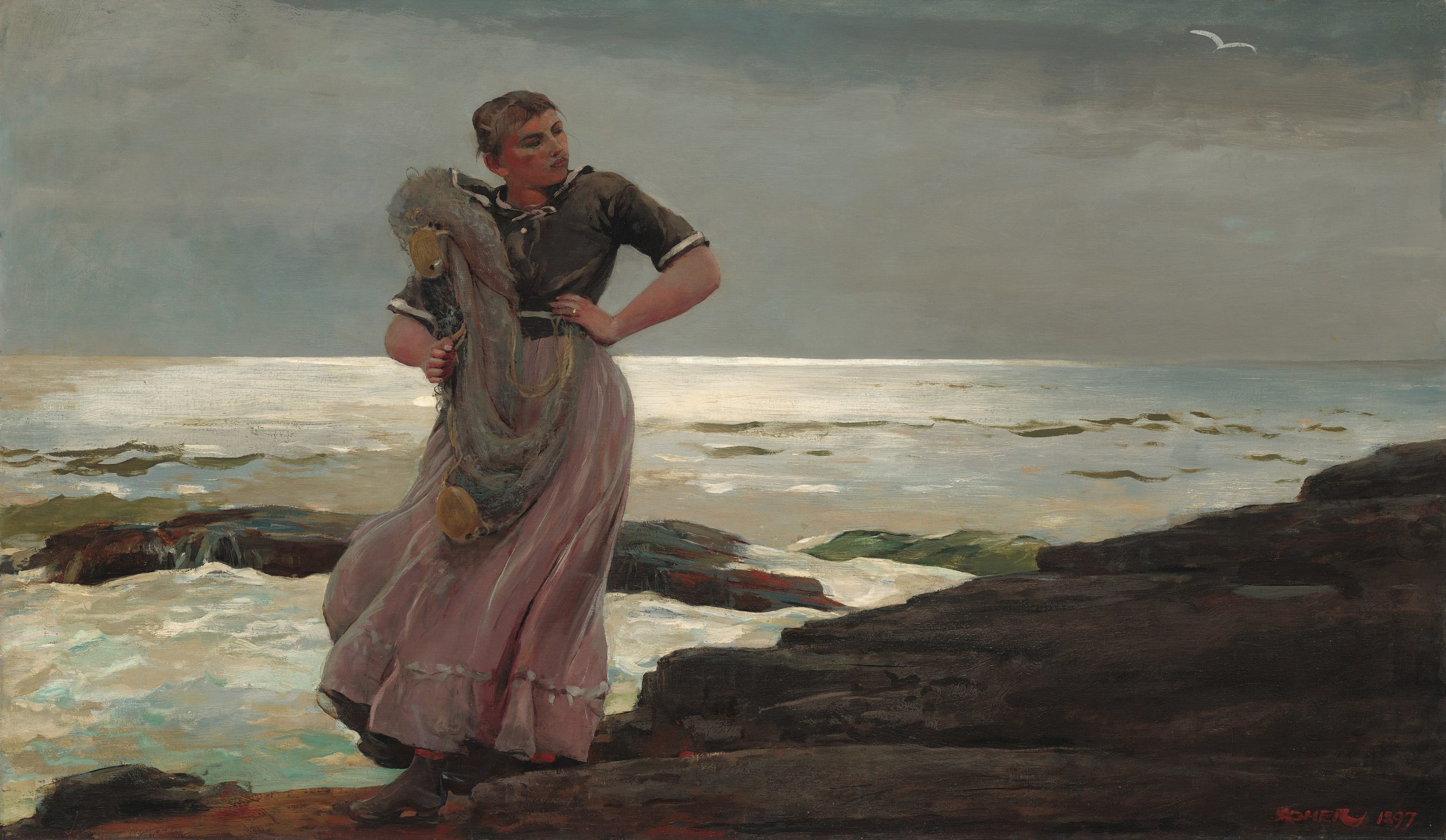
You can find more information about the art of Winslow Homer here.
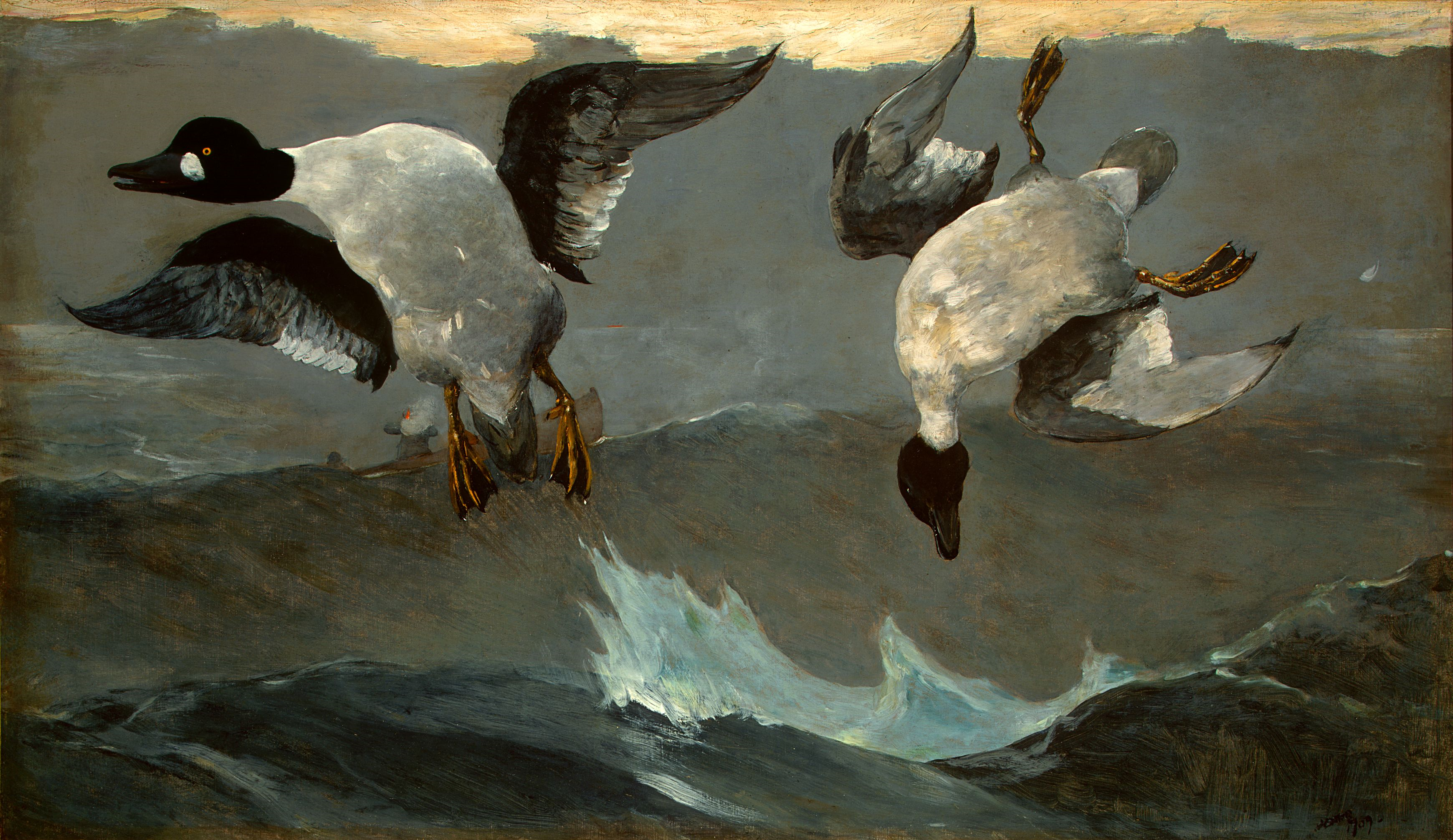
A Note About Winslow Homer’s Painting “Right and Left” (National Gallery of Art)
“One of Homer’s last paintings, is at once a sporting picture and a tragic reflection on life and death. The title refers to the act of shooting the ducks successively with separate barrels of a shotgun. The red flash and billowing gray smoke barely visible at the middle left indicate that a hunter has just fired at the pair of goldeneye ducks. The picture captures the moment but leaves important questions unresolved. Has the rifle hit its mark? If so, does the downward plunge of the bird on the right indicate that it has been hit, or is it diving to escape? The duck on the left seems frozen, but that stasis does not necessarily reveal its physical condition. And consider the precarious position in which Homer has placed the viewer, observing the scene while apparently hovering in midair, at one with the threatened creatures—and directly in the path of the oncoming shotgun blast. With its ambiguous message, unconventional point of view, and diverse sources of inspiration ranging from Japanese art to popular hunting imagery, this painting summarizes the creative complexity of Homer’s late style.”
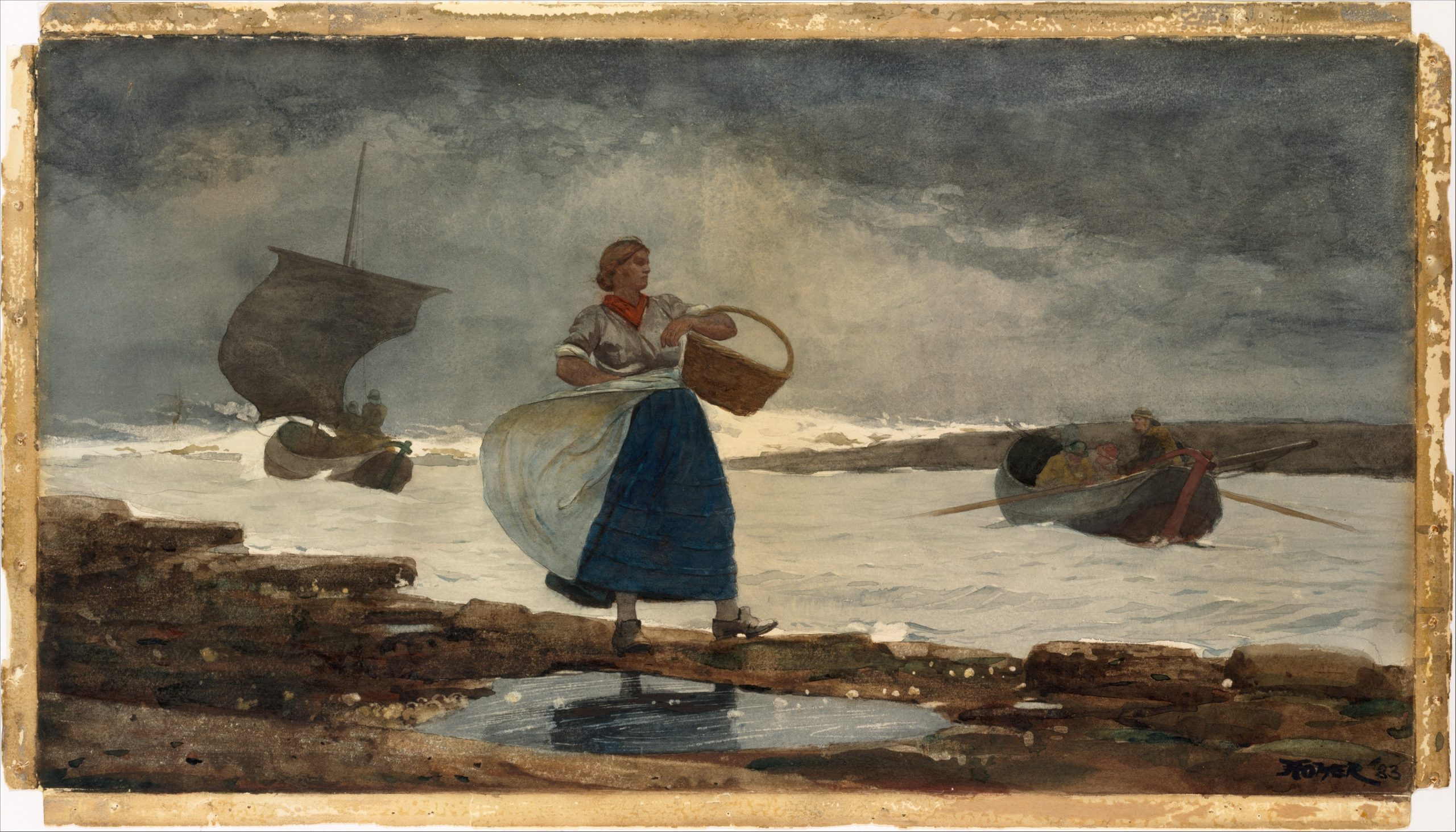
“What are Heavy?” by Christina Rossetti
What are heavy? Sea-sand and sorrow:
What are brief? To-day and to-morrow;
What are frail? Spring blossoms and youth;
What are deep? The ocean and truth.
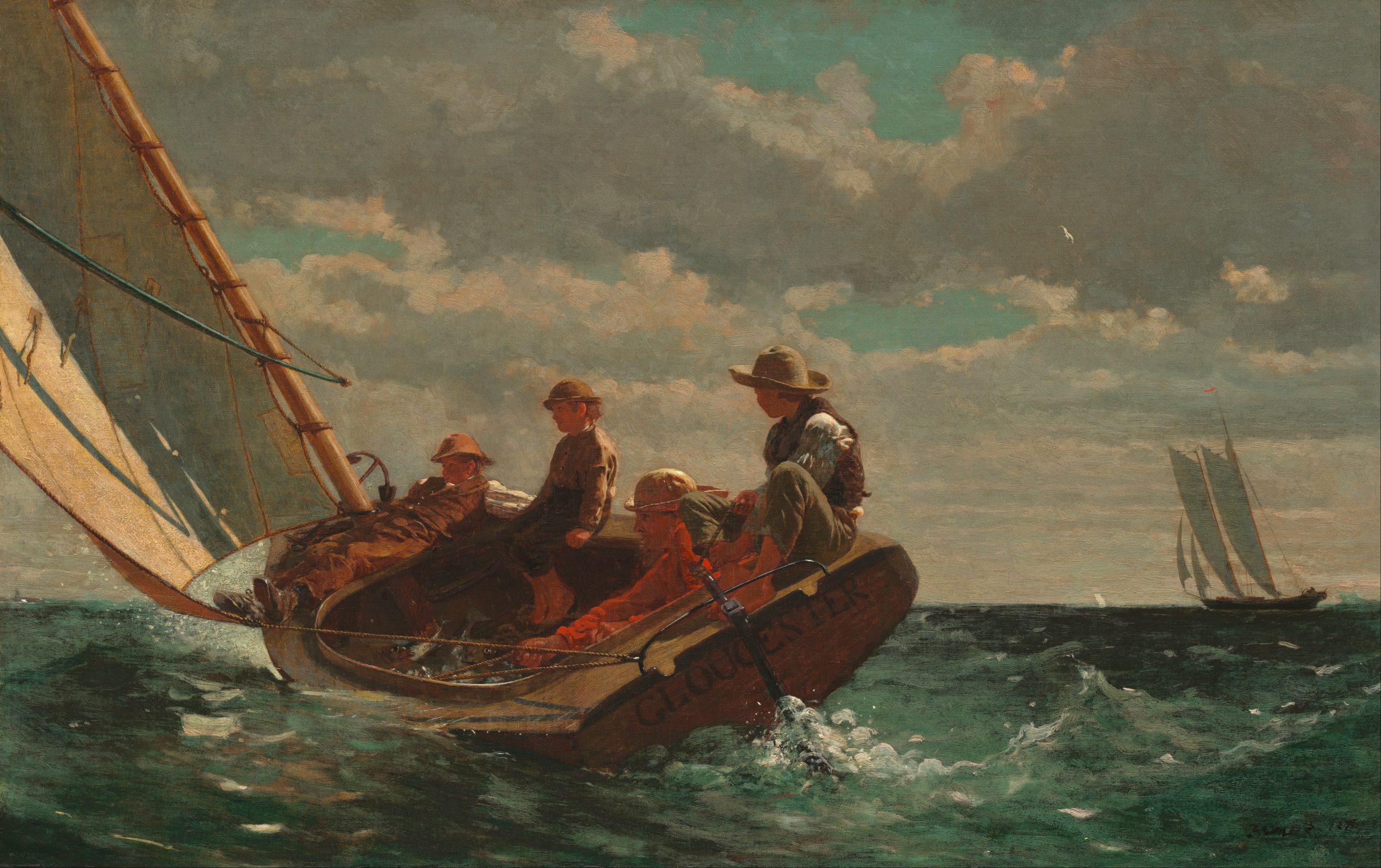
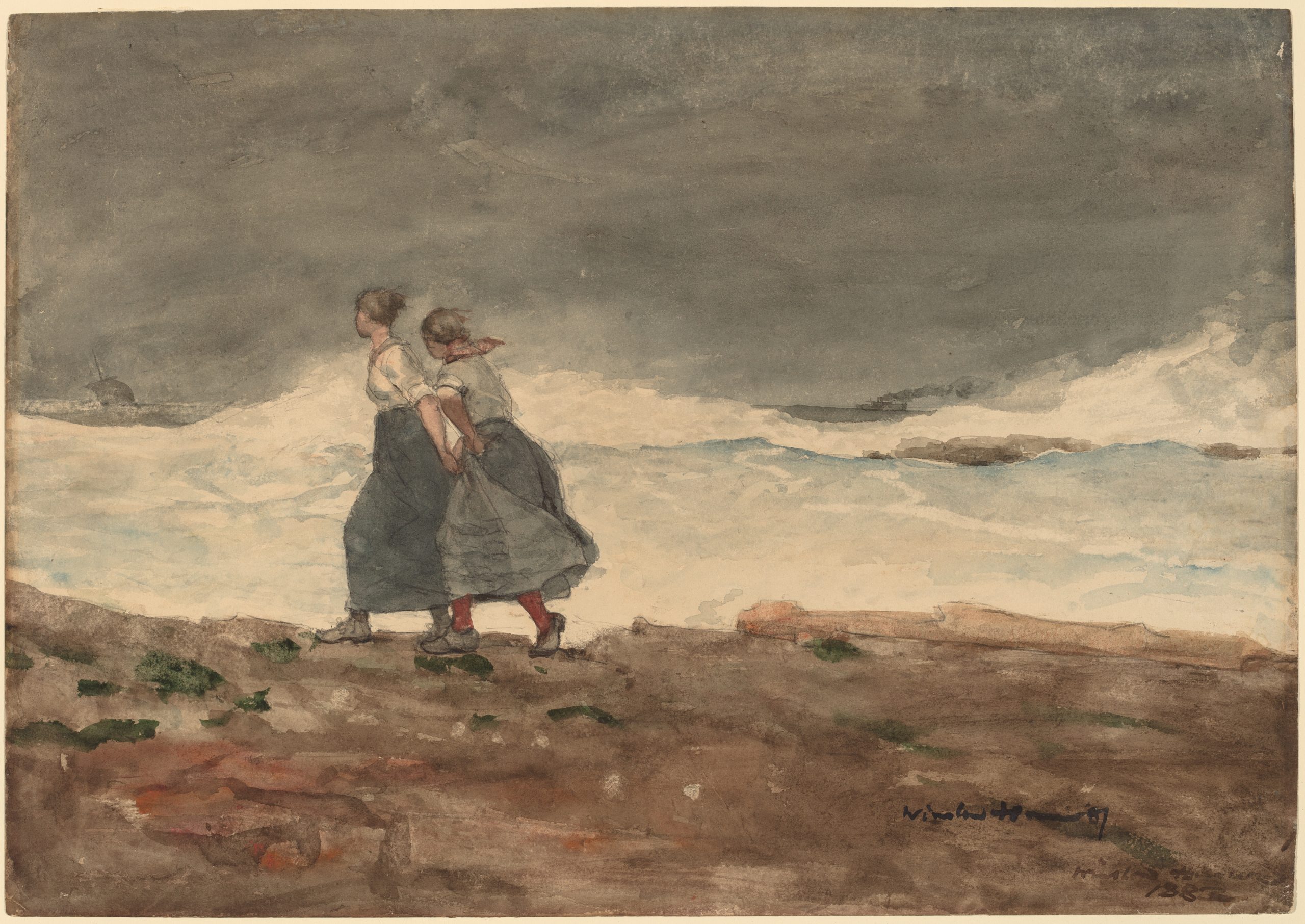
Review of “Winslow Homer: Force of Nature” Exhibit at the National Gallery in London by Laura Cumming (The Guardian, 2022)
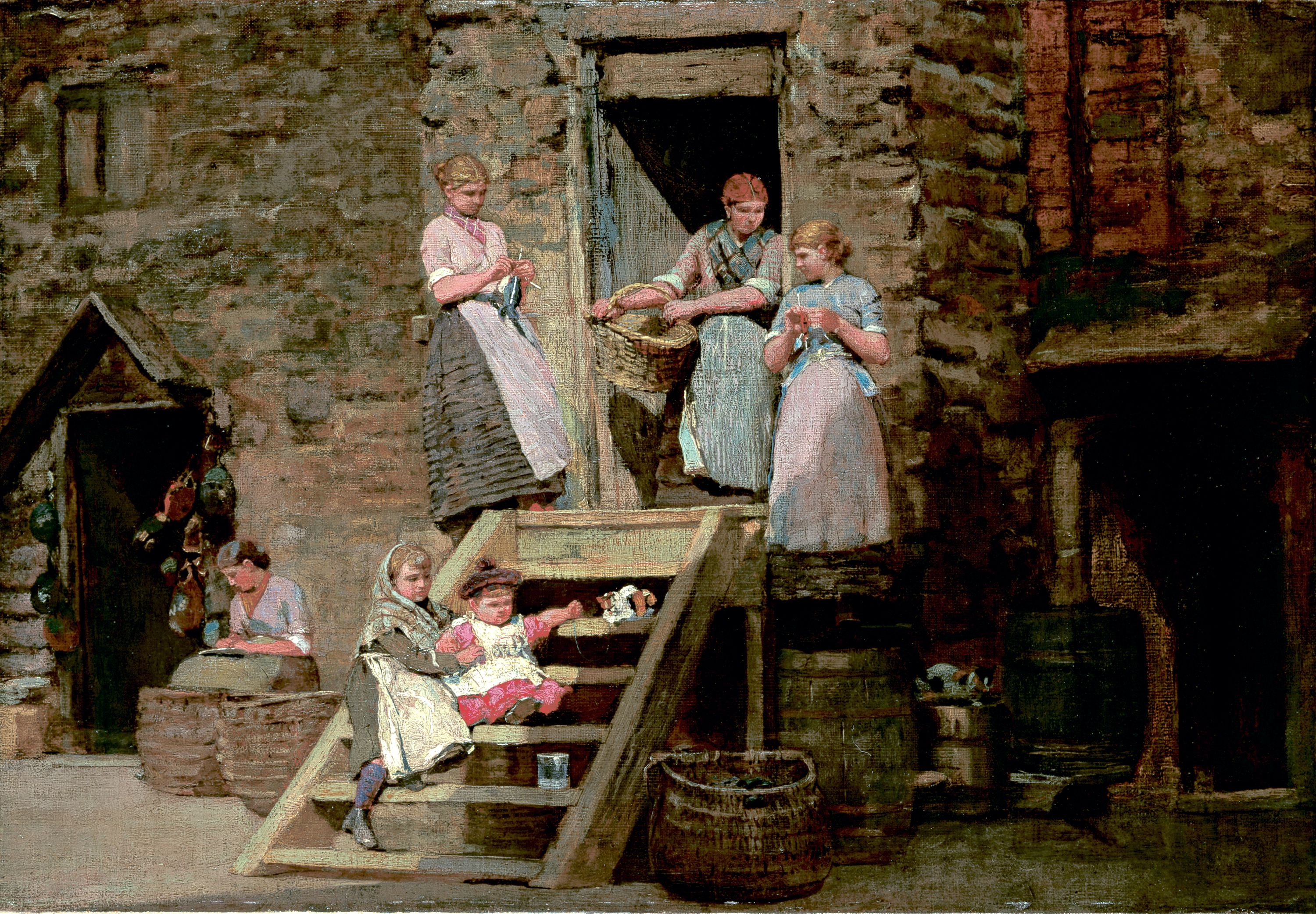
A Note About “Sparrow Hall” by Winslow Homer (National Gallery of Art)
“The fisherwomen of Cullercoats were a source of constant inspiration to Homer during his stay in England. Admiring their strength and endurance, he endowed them with a sense of calm dignity and grace. Sparrow Hall, one of a few finished oil paintings produced in Cullercoats, depicts women knitting or darning near the entrance to a 17th-century cottage, the oldest house in the village. The children, as well as the array of baskets, barrels, crates, and floats scattered about the scene, serve as reminders of the women’s innumerable responsibilities: keeping house, tending children, repairing nets, gathering bait, and cleaning fish. On the steps, a girl protectively steadies a younger child who dangles a bit of blue yarn in front of a calico cat. Sparrow Hall, wonderfully conceived, brightly colored, and superbly painted, stands very high among the Cullercoats works, and indeed among Homer’s images from any period.”
“Song of the Sea” by Rainer Maria Rilke
Timeless sea breezes,
sea-wind of the night:
you come for no one;
if someone should wake,
he must be prepared
how to survive you.
Timeless sea breezes,
that for aeons have
blown ancient rocks,
you are purest space
coming from afar…
Oh, how a fruit-bearing
fig tree feels your coming
high up in the moonlight.
